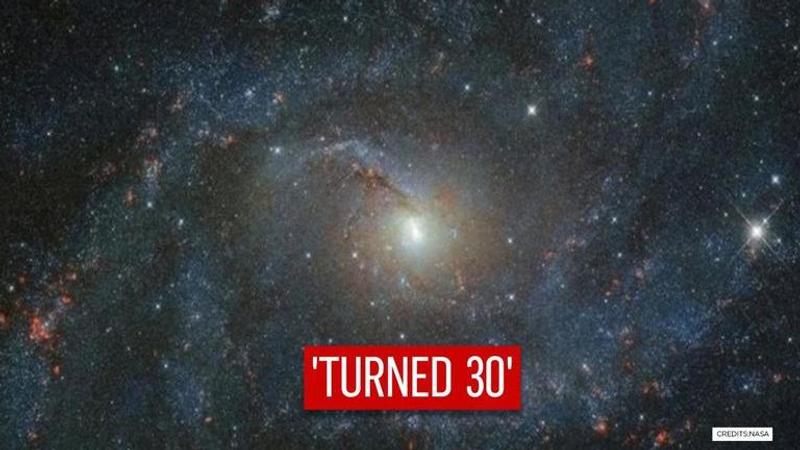Published 15:30 IST, January 11th 2021
NASA shares breathtaking view of ‘Fireworks Galaxy’ located 25.2 million light-years away
Nearly 25.2 million light-years away, the NGC 6946 explodes a mysterious blast of intense X-ray light creating phenomenal fireworks since 1917, NASA explained.

NASA on January 10 shared the breathtaking view of the spiral galaxy NGC 6946 dubbed as ‘Fireworks Galaxy’, situated 25.2 million light-years away from Earth. Taking to its official Twitter handle, the Space administration informed astrophiles that the dazzling galaxy is nicknamed ‘fireworks galaxy’ due to the frequent supernovas that occur inside its celestial mass which is “nothing short of spectacular”.
NASA'S Hubble Space Telescope captured at least 10 scintillating supernovae, that surpassed Milky Way’s on an average one to two supernova events per century, NASA explained. In the images’ phenomenal details, NASA’s Hubble telescope depicted a cluster of stars, spiral arms of the galaxy, and the inhabiting stellar environments of NGC 6946 that gave space aficionados a ‘visual retreat’.
“We are able to marvel at NGC 6946 as it is a face-on galaxy, which means that we see the galaxy “facing” us, rather than seeing it from the side (known as edge-on),” NASA separately informed in a release. “The Fireworks Galaxy is further classified as an intermediate spiral galaxy and as a starburst galaxy,” it added. Furthermore, the space administration explained the features of the Fireworks Galaxy, saying that the concrete structure of NGC 6946 sits between a full spiral and a barred spiral galaxy, with a slight bar in its center that witnessed an “exceptionally high rate” of star formation.
[Fireworks galaxy is known for its supernovas (seen in blue), but a mysterious X-ray explosion (green). Credit: NASA/JPL-Caltech]
Involves black hole or neutron star
Nearly 25.2 million light-years away, the NGC 6946 explodes a mysterious blast of intense X-ray light that has been creating phenomenal fireworks since 1917. According to NASA astronomers, it takes an estimated 25 million years for the stellar explosions to reach the Earth. In some of NASA’s imagery, energetic green X-ray blasts can be seen erupting which brightens and fades over several hundred years. According to scientists, the mysterious blast of energy is speculated to be a much more mesmeric explosion than just Supernova. Astronomers observed in The Astrophysical Journal that the fireworks inside Fireworks galaxy involve black hole or neutron star.
Updated 15:28 IST, January 11th 2021





